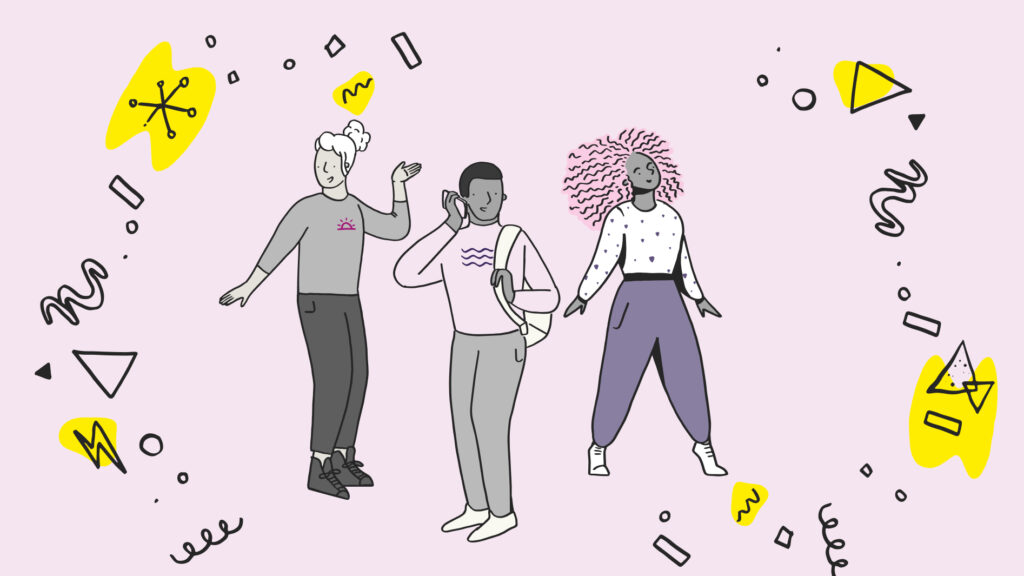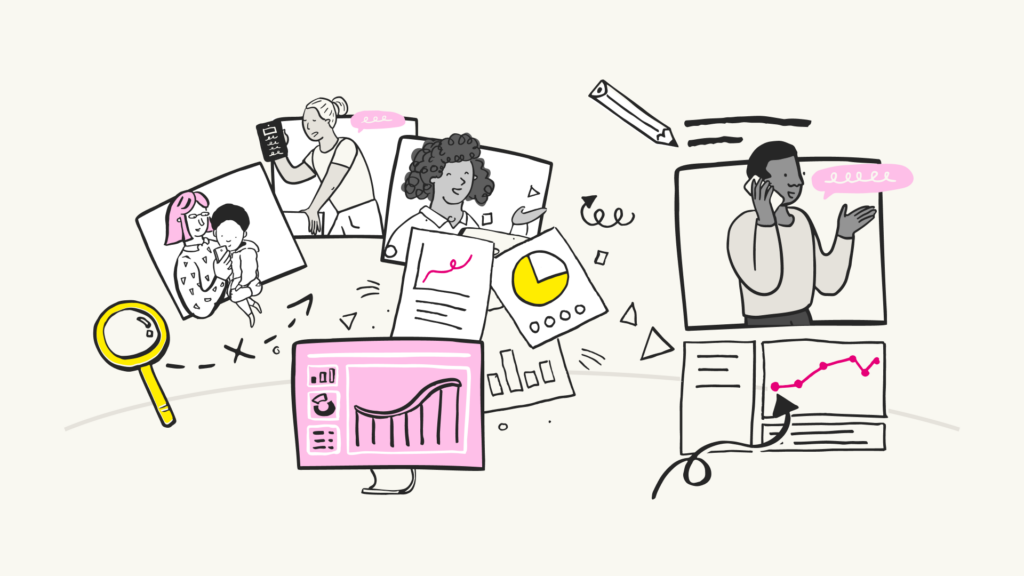
Conversations at the start of research projects tend to go along the lines of:
“What’s going to tell us most about what our users need? Talking to them, right?”
“Yup. So … user research?”
“So … let’s start recruiting?”
Well yes, but … maybe not just yet. As a UX agency specialising in user research, we love it when we start a project with a good, clear brief. But even so, the brief can only tell us so much.
And we’ve had great, well written, detailed briefs from our favourite clients. People who really understand how to get the most from usability testing. But there is always more we need to know. Always more to the context.
So how do you get that vital information to us in a way that will set the research up for success? What will make this piece of work into game changer for your business? How do we shape the project to get you exactly what you need?
“Well, how about you set up a workshop?”
“A workshop?”
“A workshop. To frame the problem.”
“To what the what?”
With everyone so pressed for time, and already at their tolerance limit for Teams calls, how do you get the most from a ‘Framing the problem’ workshop?
Here’s how.
Framing the problem

A ‘framing the problem’ workshop lets us get all the extra detail we need. We can hear from your project team, product owners and wider stakeholders, to understand the strategic business priorities driving the project forwards.
It’s a space to align thinking, share knowledge and build a consensus on what you need from the research. When we run a problem framing workshop, we follow a tried and trusted method of asking nine simple questions.
We discuss as a group questions such as:
- Why are we doing this work?
- What are the outcomes users will get?
- What do we need to learn or prove?
- What difficulties can we expect along the way?
We get the back story of what’s informed the brief, why this project really matters, why it’s being done now, and what has already been done that we need to be aware of.
You get to tell us all the vital context that will help our team tailor their recruitment plan and discussion guides. This gets us to focus the research activity to answer your most vital questions.
Communicate the value of the workshop
Workshops demand a lot from stakeholders in terms of time commitment. So we always plan, structure and run client workshops with the utmost care, to make the very best use of people’s time.
Invites should tell people the purpose of the workshop and why their input is needed. The invite should also tell people how much time is expected from them (an hour and a half, half a day?), and if they need to prepare anything in advance (probably not).
To value of the workshop is that your spending on user research will be maximised. Our researchers will understand your priorities, who they need to talk to and how to plan ahead for the bumps in the road.
Get the right people in the room
It’s important to think about the dynamics when planning invites to the workshop. Having very senior people can inhibit the discussion from more junior people, for example. Who wants to tell the truth about why the current sales funnel is performing so badly when their boss’s boss is on the call?
Ideally, we want the workshop to be a space for free expression of genuine concerns and interests, to best inform the project. We work with you to get this right.
For example, maybe we run a workshop just for the senior stakeholders, separate to the ‘hands on’ project team. The first will give us the satellite view of why this work is strategically important. The second will give us the detail about systems, processes and potential blockers.
Make everyone feel comfortable

We begin our workshops with a very brief welcome to set out the purpose of the session and an outline of how the time will be structured. For example, in remote workshops we give a quick overview of how to use Miro for anyone who hasn’t used it before. (We usually use Miro or something similar if you prefer a different digital whiteboard.)
We also find that a set of ‘workshop rules’ really helps people settle in and feel confident. These are things such as ‘Everyone’s views, opinions and answers are respected’ and ‘We will use the timer and keep to the time limits set for each activity’. Sounds obvious, right? But it works.
We also ask if anyone would like to add any new rules for this workshop. This tells everyone that they are shared owners of the time we’ll spend together. It’s usability research co-design in action.
Get the most from each activity
Workshops work best when they are divided into clearly structured activities. To encourage everyone to contribute, each activity is introduced by our facilitator, demonstrating by example how a particular Miro activity should be done. Things such as adding dots to voting on cards, or distributing points to prioritise product features.
After the activity is complete we ask people to talk through and explain any comments they’ve added to the Miro board, and this often starts useful conversations as a result.
Make sure everyone is heard
Throughout the workshop our facilitators take note to prompt quieter members of the group to add their thoughts.
This is very effective at breaking the ice, especially for anyone feeling unsure if their contribution will be valuable to the group, such as more junior people, or people less directly involved with the project.
Align and move forwards
The value of the workshop as a group activity is that we can build consensus and get buy-in to complex decisions that balance business objectives and budget restrictions. Towards the end of the workshop it is important that the group have time to review any decisions and have an opportunity to discuss these.
What do you get at the end?
The beginning! The beginning of a fully integrated round of usability testing.
The whiteboard from the framing the problem workshop becomes an invaluable reference point. We can’t stress this enough. Throughout the following weeks, our user researchers will be using it to remind themselves of who is who on the client team, what the expectations are for the work and how this project should inform, and be informed by, other workstreams.
It also plays a vital role in making sure that by focussing on the right research questions, we plan for the outcomes and deliverables that will make the most of the budget and time available.
TL;DR
A successful problem framing workshop means that instead of simply responding to a brief with our existing knowledge, we are now collaborating with you to define a fully informed, responsive and prioritised set of goals.
Can we help you?
Whether you’re defining a new product or improving an existing service, research helps you get to the heart of what your users really need. It dispels assumptions, uncovers painpoints, and helps unify stakeholders behind common goals and objective insights.
Nomensa has been running user research and usability testing sessions for over two decades. In fact, we host 1000s of sessions every year. If you’d like our help illuminating the way in your next project, we’re happy to help.
Just get in touch with our team by contacting us online or give us a call at +44 (0) 117 929 7333.
We drive commercial value for our clients by creating experiences that engage and delight the people they touch.
Email us:
hello@nomensa.com
Call us:
+44 (0) 117 929 7333




